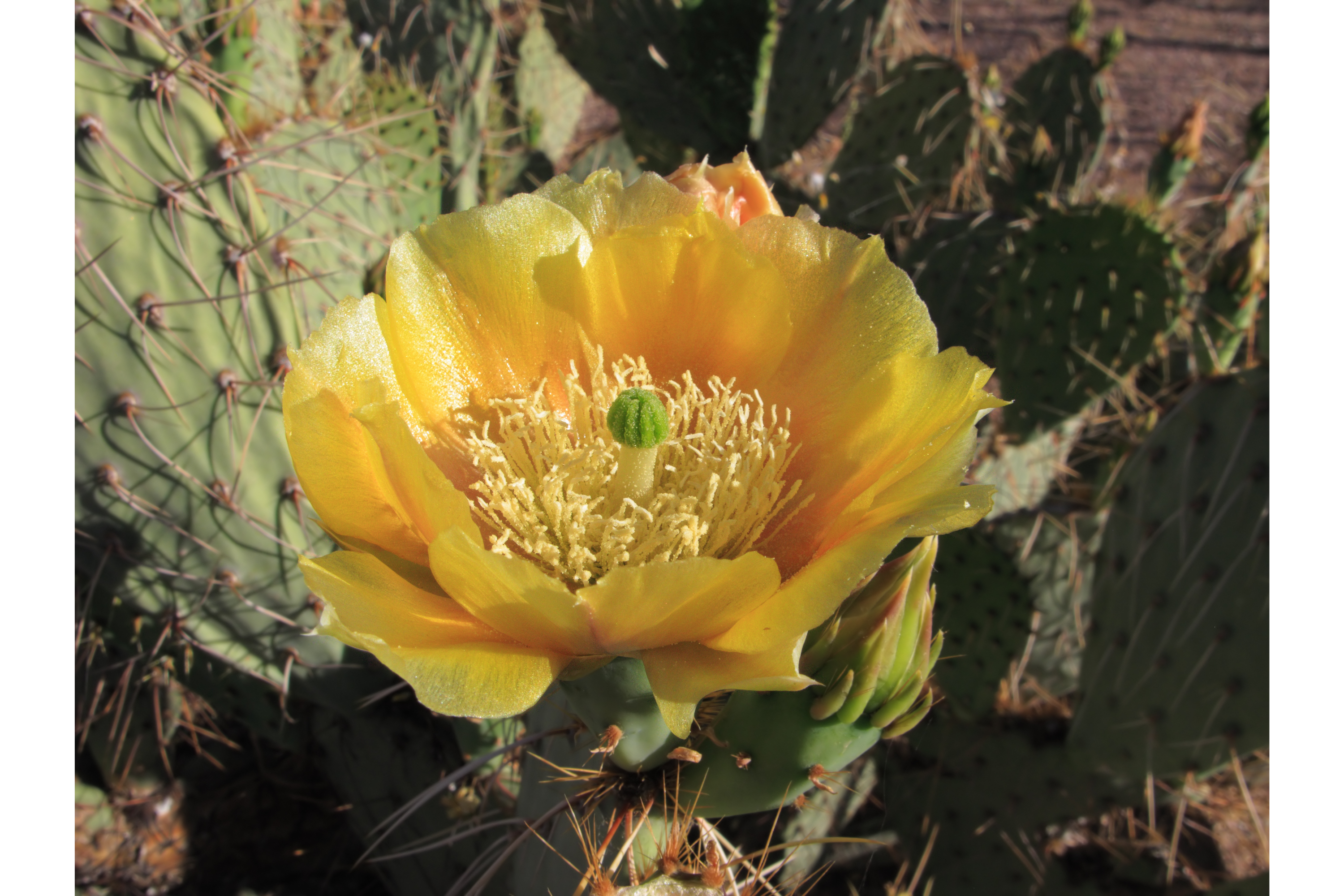Border pricklypear
(Opuntia atrispina)

Description
Opuntia atrispina is a cactus species in the genus Opuntia. It has limited distribution in the United States. In Texas it can be found from near Uvalde to Del Rio/Langtry—a small strip of area just 50 miles long. The epithet of this species means "black-spined", denoting the fact that its spines are dark-brown to black at least in the lower part. The flowers on these small shrubs are special because they open pale yellow (sometimes almost white) and darken with age to rose. Thus, the plants can be adorned with flowers of multiple colors: cream, yellow, salmon, and rose. Newly opened flowers can even have a hint of green in the middle. The spines too are special because they are yellowish at the tips but dark brown at the bases. Opuntia, commonly called prickly pear or pear cactus, is a genus of flowering plants in the cactus family Cactaceae. Prickly pears are also known as tuna (fruit), sabra, nopal (paddle, plural nopales) from the Nahuatl word nōpalli for the pads, or nostle, from the Nahuatl word nōchtli for the fruit; or paddle cactus. The genus is named for the Ancient Greek city of Opus, where, according to Theophrastus, an edible plant grew and could be propagated by rooting its leaves. The most common culinary species is the Indian fig opuntia (O. ficus-indica). O. ficus-indica is a large, trunk-forming, segmented cactus that may grow to 5–7 m (16–23 ft) with a crown of over 3 m (10 ft) in diameter and a trunk diameter of 1 m (1 yd). Cladodes (large pads) are green to blue-green, bearing few spines up to 2.5 cm (1 in) or may be spineless. Prickly pears typically grow with flat, rounded cladodes (also called platyclades) containing large, smooth, fixed spines and small, hairlike prickles called glochids that readily adhere to skin or hair, then detach from the plant. The flowers are typically large, axillary, solitary, bisexual, and epiperigynous, with a perianth consisting of distinct, spirally arranged tepals and a hypanthium. The stamens are numerous and in spiral or whorled clusters, and the gynoecium has numerous inferior ovaries per carpel. Placentation is parietal, and the fruit is a berry with arillate seeds. Prickly pear species can vary greatly in habit; most are shrubs, but some, such as Opuntia galapageia of the Galápagos, are trees.
Taxonomic tree:







